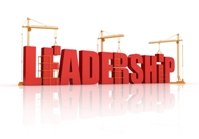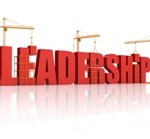
A group of global CEOs recently gathered for a private dinner in a Spanish restaurant in central Tokyo.
Representing a variety of sectors spanning food, insurance and banking, medical devices, semiconductors, and heavy industries like steel, it was the first time they had all been together since the COP28 meeting in Dubai and the World Economic Forum in Davos, Switzerland, earlier in the year.
Global disruptions were the main topic for these Japanese executives, just as they are in executive conversations around the world.
These are six topics that dominated the evening’s discussion:
1. Sustainability. At Davos, environmental, social, and governance topics were prevalent, even though the acronym “ESG” was rarely, if ever, mentioned. Instead, discussions were much more specific, focusing on areas such as biodiversity, food systems, and carbon transition, among others. Companies are expected to understand the role they will play in helping the world transition to a more sustainable, lower carbon economy.
Japan may have been a slight latecomer to this, but there is no longer any doubt that sustainability is a top agenda item for all C-suite executives. The number of business roundtables and events dedicated to the topic has proliferated just in the last one to two years.
2. A less globalized world with greater geopolitical risk. From wars in Ukraine and the Middle East to ongoing economic tensions between the US and China, there’s plenty of risk to go around. For these executives, an important aspect of this shift is the private capital diversion from China to other Asian markets. Japan, Singapore, and India in particular are beneficiaries of this trend. Additional private capital provides an interesting opportunity for many businesses to become more efficient and accelerate growth.
A second aspect is recent supply chain disruption that has industries such as semiconductors looking for alternative suppliers, creating additional demand in Japan. Finally, as China stimulates its slowing domestic economy, greater manufacturing output is fueling price competition globally in a number of industries, among them automotive, steel, and solar panels. This is putting tremendous pressure on all the executives at the dinner table and creating sharp competition in markets including Southeast Asia, India, South America, and Africa.
3. Technology and Artificial Intelligence. Generative AI has fueled the urgency to better leverage technology for competitive advantage. This is not just a chief technology officer issue—it’s relevant to the entire C-suite. Generative AI has gone from experimentation and proof-of-concept development to real, fundamental business model disruption. The race to scale solutions across large global organizations with complicated, often legacy IT infrastructures, is afoot. This has implications for both enterprise technology and change management. Japan is pushing to keep up. Start-ups and corporate giants like NEC are all making big investments but risk falling behind in a field where agility and speed are paramount—not always the top characteristics of traditional Japanese industry.
4. Diversity, Equity, and Inclusion. It’s become stylish in some quarters to argue that such efforts are losing favor, but not at this table. In a country famous for conformity, those efforts are nevertheless taking hold in very profound and real ways that are influencing the labor markets. In Japan the thinking is broad. It’s not only gender equity, as important as that is, but also global, experiential, and leadership diversity. The share of female board members at Japanese companies is low, but so is the breadth of management experience and global representation.
5. Corporate governance. Around the world, boards are under increasing shareholder and public pressure to address issues one through four above. In Japan, this is a very present topic. While other markets such as the US and UK are rather new to thinking about properly representing the interests of multiple stakeholders, Japan has arguably always been ahead of the game. If anything, shareholders have been somewhat neglected. Building governance that creates value for all stakeholders will require the focus of executives, independent directors, and institutional investors alike.
6. Rising cost of money. The rise in interest rates has increased funding costs for corporations. While interest rates were nearly zero and borrowing costs were minimal until a few years ago, interest rate hikes are now widespread globally, leading to higher borrowing costs. Even in Japan, interest rates are expected to slowly rise. It was national news when the country ended eight years of negative interest rates aimed at stimulating growth and combating deflation.
Any one of these would be a career-defining challenge for a CEO. Tackling all six at once? Well, it’s a hard job. CEOs are expected to have answers to a much broader set of complicated questions but never lose sight of critical business operations like costs relative to the competition, the customer value proposition, and the recipe for driving top-line growth.
CEOs are being asked how they are contributing to making the world a better place—safer, more sustainable, more equitable, more innovative. That may be a good thing, but it’s not a job for the faint of heart.
Source: forbes.com







